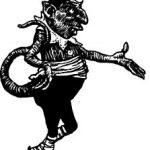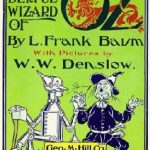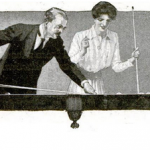August 8, 2003
The other day my parents called me up so they could describe a snake to me in the hopes that I would be able to identify it. Now, I’m not a herpetologist, a profession that used to guarantee that you wouldn’t get a date even though it wasn’t at all what it sounded like but now guarantees you your own show on a cable network as long as you agree to spend the rest of your life wearing khaki shorts.
The fact is I’m not any kind of -ologist. I can tell a snake from a lobster at ten feet away, and if I were hiking and found a snake with red, black, and yellow bands around its body I’d be able to say, "Red on yellow he’s something something fellow…uh," and then I’d turn around and go somewhere else. I did once successfully identify a rattlesnake, and was even smart enough to identify it before I stuck my hand in the woodpile where it was curled up glaring balefully at me. The amazing thing about my parents asking me to identify anything, though, is that for years they didn’t trust me. They had good reason, too. My mother found a cluster of beetles at the base of her tangerine tree, and asked me to identify them. At the time I was about ten years away from having to choose a career, and had made up my mind that I would either be something that ended in -ologist or a writer.
I finally decided on being a writer because it was the only way to get out of taking math classes, but at the time I was leaning towards entomology…or paleontology…or herpetology (I wasn’t concerned about dating at the time, and had a pair of kakhi shorts)…Actually marine biology was where my heart was. In my childhood Valhalla Spider-Man only came in second place; Jacques Cousteau was my number-one hero. But growing up in Tennessee with annual two-week vacations to Florida gave me precious little time to study oceanic fauna, so I identified and collected bugs as well. My mother pointed to the beetles and said, "What are these?" At that point I was faced with a choice: be a writer or be a scientist. A scientist would say, "I don’t know, but I’ll see if I can find out." That was boring, which was why the writer in me won: "Those are…CITRUS BEETLES!" To make it worse I elaborated on the destructive properties of citrus beetles in a way that made them sound like a cross between boll weevils, gypsy moths, and the disease that killed all the chestnut trees. Tangerine crops from the redwood forests to the Gulf stream waters were in grave danger, and my mother had discovered ground zero. By the time I was finished we were looking at the worst arboreal disaster since a comet tore Tunguska a new one in 1908. I should have known better, and I could say I was telling my mother what she wanted to hear – that all those bug identification books, microscopes, chemistry sets, and dissecting kits she bought me were paying off, but that’s dodging the issue. I know we don’t live in a perfect world, but, really, a scientist should stick to the facts regardless of who signs the checks. Writers can manipulate, exaggerate, or just fabricate, and they get big, fat checks in return for it. At least I hope so. I got rid of my kakhi shorts years ago.
Anyway, it didn’t take long for my fiction to be exposed by a guy whose qualifications as an entomologist consisted of a baseball cap that said, "Ralph’s Rodent, Reptile, ‘n’ Raconteur Removal" on it. For years afterward I couldn’t tell my parents about any strange animal without them bringing up citrus beetles. "Sea cucumbers?" they’d say. "Are they like citrus beetles?" Or, "Praying mantis? Is that a kind of citrus beetle?" Or, "A big black dog foaming at the mouth is chasing you? Are you sure it’s not a citrus beetle?" So when they called me up to ask me if Icould identify a snake based on a vague description, I felt I’d finally gained my credibility back. And I like to think I maintained it by saying, "I don’t know." I resisted the temptation to say, "Well it might be a boomslang," an animal that only sounds made-up. What’s a boomslang? Well, let’s just say it’s nothing like a citrus beetle.
Enjoy this week’s offerings.
Think you know everything?
A dime has 118 ridges around the edge.
A cat has 32 muscles in each ear.
A crocodile cannot stick out its tongue.
A dragonfly has a life span of 24 hours.
A goldfish has a memory span of three seconds.
A "jiffy" is an actual unit of time for 1/100th of a second.
A shark is the only fish that can blink with both eyes.
A snail can sleep for three years.
Al Capone’s business card said he was a used furniture dealer.
All 50 states are listed across the top of the Lincoln Memorial on the back of the $5 bill.
Almonds are a member of the peach family.
An ostrich’s eye is bigger than its brain.
Babies are born without kneecaps. They don’t appear until the child reaches 2 to 6 years of age.
Butterflies taste with their feet.
Cats have over one hundred vocal sounds. Dogs only have about 10.
"Dreamt" is the only English word that ends in the letters "mt".
February 1865 is the only month in recorded history not to have a full moon In the last 4,000 years, no new animals have been domesticated.
If the population of China walked past you, in single file, the line would never end because of the rate of reproduction.
If you are an average American, in your whole life, you will spend an average of 6 months waiting at red lights.
It’s impossible to sneeze with your eyes open.
Leonardo Da Vinci invented the scissors.
Maine is the only state whose name is just one syllable.
No word in the English language rhymes with month, orange, silver, or purple.
On a Canadian two dollar bill, the flag flying over the Parliament building is an American flag.
Our eyes are always the same size from birth, but our nose and ears never stop growing.
Peanuts are one of the ingredients of dynamite.
Rubber bands last longer when refrigerated.
"Stewardesses" is the longest word typed with only the left hand; lollipop" with your right.
The average person’s left hand does 56% of the typing.
The Bible does not say there were three wise men; it only says there were three gifts.
The cruise liner, QE2, moves only six inches for each gallon of diesel that it burns.
The microwave was invented after a researcher walked by a radar tube and a chocolate bar melted in his pocket.
The sentence: "The quick brown fox jumps over the lazy dog" uses every letter of the alphabet.
The winter of 1932 was so cold that Niagara Falls froze completely solid. The words ‘racecar,’ ‘kayak’ and ‘level’ are the same whether they are read left to right or right to left (palindromes).
There are 293 ways to make change for a dollar.
There are more chickens than people in the world.
There are only four words in the English language which end in "dous": tremendous, horrendous, stupendous, and hazardous.
There are two words in the English language that have all five vowels in order: "abstemious" and "facetious."
There’s no Betty Rubble in the Flintstones Chewables Vitamins.
Tigers have striped skin, not just striped fur.
TYPEWRITER is the longest word that can be made using the letters only on one row of the keyboard.
Winston Churchill was born in a ladies’ room during a dance.
Women blink nearly twice as much as men.
Your stomach has to produce a new layer of mucus every two weeks; otherwise it will digest itself.
………………..now you know everything!






Facebook Comments